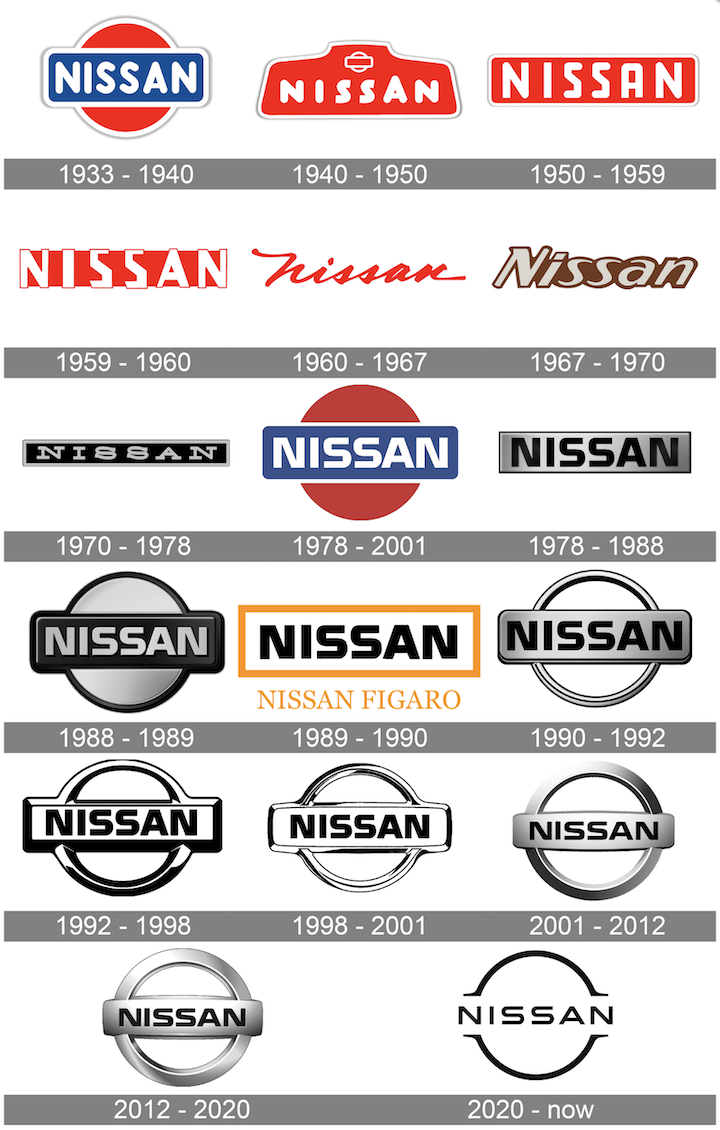Nissan's emblem has evolved significantly since the company's founding, showcasing its commitment to innovation and global identity. Understanding this history reveals deeper symbolism in the modern logo.
1933-1960s: Origins and Text-Based Logos
Founded in 1933 as Nissan Motor Co., Ltd., the initial logo featured a circular design with the name "NISSAN" in both Japanese characters and English script. This simple badge emphasized reliability during early automotive ventures. By the 1960s, it shifted to minimalist text-based formats, often bold red lettering, symbolizing energy and progress.
1983-Present: The Modern Silver Circle
In 1983, Nissan introduced the iconic silver circle emblem, refined in 2001 for contemporary appeal. The design includes a slim silver border enclosing the uppercase "NISSAN" in bold font, now typically rendered in metallic finishes. Key milestones:

- 1983: Debut as part of Nissan's rebranding for international markets.
- 2001: Subtle updates enhanced font sharpness and material texture.
This enduring symbol reflects Nissan's engineering precision and modern aesthetics.
Symbolism and Cultural Significance
The circular shape represents Nissan's global reach and unity, while the silver hue conveys technological advancement. Historically, red accents (common in earlier versions) denote passion and dynamism. Overall, the emblem embodies core values like innovation and customer focus, making it instantly recognizable worldwide.






